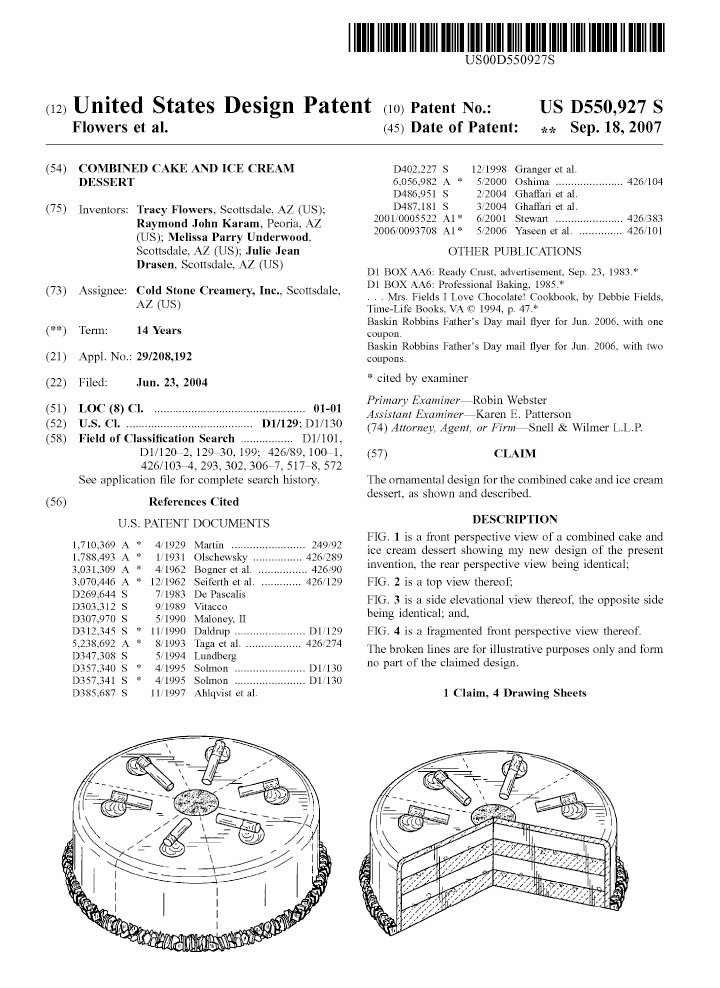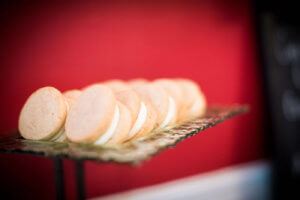If you put in the time and effort to invent your own recipes or culinary designs, it’s natural that you’d want to protect them from copycats.
In the United States, the U.S. Patent and Trademark Office (USPTO) is the governmental organization that issues legal protections to new inventions. These protections come in the form of patents and trademarks.
So are patents and trademarks available to culinarians who create new recipes or culinary designs? The answer is…sometimes! We’re going to dig into what patents and trademarks are, and how you may be able to use them to protect your inventions.
Note: This post is for informational purposes only and is not intended to serve as legal advice.
Patents in the Culinary World
What Is a Patent?
A patent is an exclusive license that gives an inventor (or the company that hired the inventor) the right to use and monetize their invention. This license serves as an incentive that lets inventors profit financially from their work. However, the exclusive right to profit financially from a patent is only granted for a limited period of time. After this period, it becomes public domain and infringement can not be enforced.
Three Types of Patents
- Design Patent – protects an ornamental design, like a new kind of cake decoration or packaging. The Heinz “Dip & Squeeze” ketchup packet, for example, has a design patent. The exclusive license lasts 15 years from issuance.
- Utility Patent – protects a “new and useful process, machine, article of manufacture, or composition of matter, or any new and useful improvement thereof.”1 For instance, components of the KitchenAid food processor have utility patents. The exclusive license lasts 20 years from the date of filing.
- Plant Patent – protects new kinds of plants. A new herb or vegetable hybrid could be eligible to get a plant patent if it meets the legal requirements.
How Can Design Patents Apply to the World of Food?
A design patent can offer protection for the visual components of a culinary creation. This could include the food item itself or the packaging it comes in.
Escoffier Chef Instructor Tracy DeWitt designed Cold Stone Creamery’s famous ice cream cakes in the mid-2000s. She both created the look of the cakes and suggested that Cold Stone alternate layers of cake and ice cream.
“When the cake is one big section on top of ice cream, it dries out,” she said. “If you layer it with the ice cream, the ice cream brings some moisture in. And I taught them how to soak the cake with syrup so that it would be more moist.”
After the design was completed, Cold Stone sought a design patent that named Chef Tracy as one of the inventors. The patent protects this combined “cake and ice cream dessert” in the layers Tracy suggested, decorated with candy on each slice and along the side. Another dessert shop couldn’t recreate this design in a dessert without infringing on Cold Stone’s design patent.

“Telling people that I have a patent with Cold Stone Creamery is one of the things that they really get excited about, because everybody seems to know Cold Stone. When I tell people all the things I’ve done, even Food Network, a lot of them are like, ‘Cold Stone? That’s amazing!”Tracy DeWitt, Escoffier Pastry Chef Instructor and “Food Network Challenge” Gold Medalist
Can You Patent a Recipe?
It may seem at first glance that a utility patent would be a good way to protect a recipe. After all, a recipe is a “new and useful process…or composition of matter…” right?
Well, another rule regarding utility patents is that they have to be “novel” and “nonobvious.” And since recipes are usually the sum of their ingredients, it can be hard to make the “nonobvious” argument. A cake with an unusual flavoring added is still a cake, not an entirely new invention. So it probably would not succeed at getting a patent.
This doesn’t mean it’s impossible to patent a new recipe. It does happen. But as USPTO Supervisory Patent Examiner Larry Tarazano says, “…if you take a look at most of these [culinary] patents, you’ll find that the recipe was more likely to have been created in a laboratory than on a kitchen counter.”

Even some of the most famous recipes in the world, like Coca-Cola®, are not patented. Instead, the company is extremely secretive about their recipe. Their own employees don’t know what’s in it. Additionally, the company has focused on protecting the brand through trademarks.
Trademarks May Be the Better Route
What Is a Trademark?
A trademark is a word, phrase, and/or design that refers to a specific product or service. Trademark is often used as an umbrella term, but it specifically refers to products, while service mark refers to services.
With a trademark, you’re not protecting the process or invention. You’re protecting the brand around that process or invention. Additionally, trademarks never expire as long as they remain in use. This can be an effective (and much more affordable) way to protect your creations.
Word Marks and Logo Marks
- A word mark is the name of the product, service, or brand. The name Oreo® is a word mark.
- A logo mark is a protected design, like the Nike® swoosh. It may also appear with a word mark.
Protecting Your Brand with a Trademark
With a trademark, you protect the name of your creation and prove that you created the original.
Pastry chef and Cronut creator Dominique Ansel trademarked the name “Cronut” so that none of the many imitators could use the name. Other bakers had to use different names for their versions, or face legal action from Ansel.
Escoffier Chef Instructor Steve Konopelski has his own trademark for his special cannoli-inspired cookie, the Cannolio®. Because of their creamy filling, cannolis turn soggy very quickly, so Chef Steve invented a cookie with a soft bite that includes those cannoli flavors. Now, no one else can use the trademarked name Cannolio® in connection with cookies or pastries.

And to protect the recipe, Chef Steve eschewed a patent and instead focused on his “trade secrets.” He trained one staff member to make the cookie part of the dessert, while Chef Steve always made the filling himself. That way, no one could recreate the cookie. Coca-Cola® and other large brands take a similar approach, only training staff on one component of a finished recipe.
With trademarks and trade secrets, you can protect your culinary creations more effectively, and more affordably, than seeking a patent.
“Most big companies take the branding route. They’re known for putting out a product and that product has a specific name, so people know to grab the name. They try to keep their recipes or procedure as secret as they can. You have to list ingredients [on packaged foods], but no one knows exactly how they’re put together.”Chef Steve Konopelski, Pastry Chef and Escoffier Chef Instructor
How to Get a Patent or Trademark
The patent process can get complicated, so you’ll probably want to hire a patent attorney. They will do a thorough search of the current patent databases to make sure that your invention or design is unique enough to qualify for a patent.
A design patent will require a title, description, and explanation of how your design is unique. You’ll need drawings of your design as well. The design patent application process will probably cost a few thousand dollars, between fees and legal expenses.

You’ll also have to identify the industry that the mark will apply to. Chef Steve’s trademark of Cannolio® is specifically related to cookies and pastries. If someone else sold or marketed a car called the Cannolio®, they’d be perfectly allowed to do that!
When in Doubt, Get Help!
When you’re aiming to protect your culinary creations, make sure you consider the ramifications of each step.
A utility patent is hard to get and will require you to divulge your trade secrets, so it may not be the best choice. But a design patent can protect the look of your invention, while a trademark can protect its name and your overall brand.
To get more details, an experienced patent attorney is the best person to talk to!
Special thanks to attorney Rob Griffith for consulting on this article.
To learn more about the business of food, try these articles next:
- 4 Roadmaps to Becoming a Food Entrepreneur
- How Much Does it Cost to Start a Restaurant?
- 4 Keys to Running a Cottage Industry Bakery
1https://www.uspto.gov/patents/basics/general-information-patents


